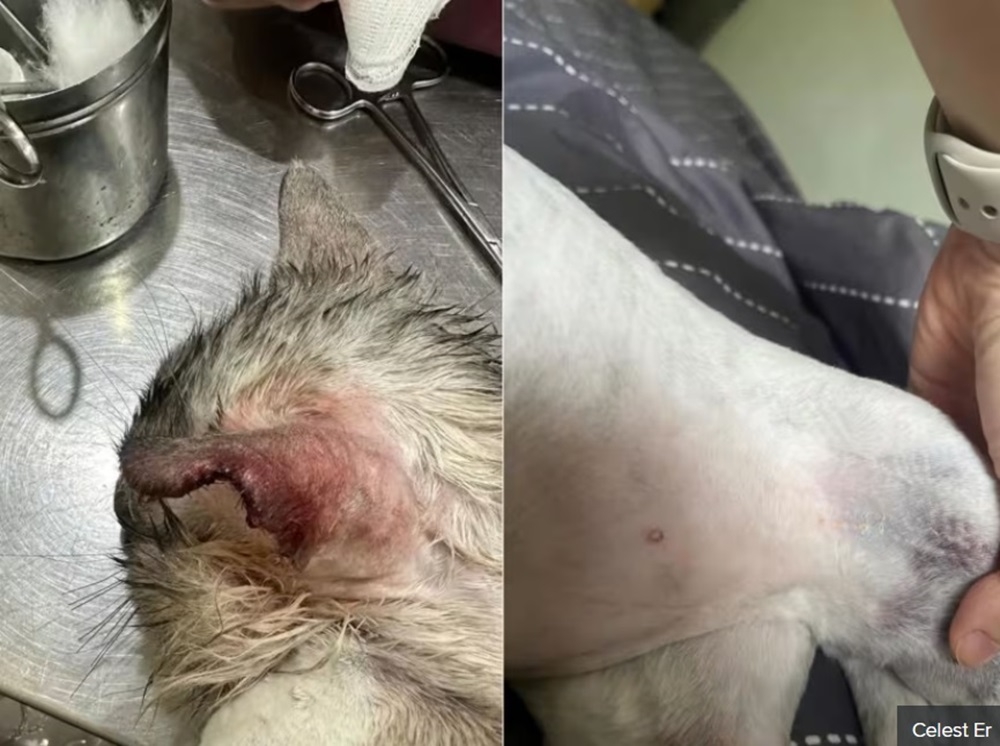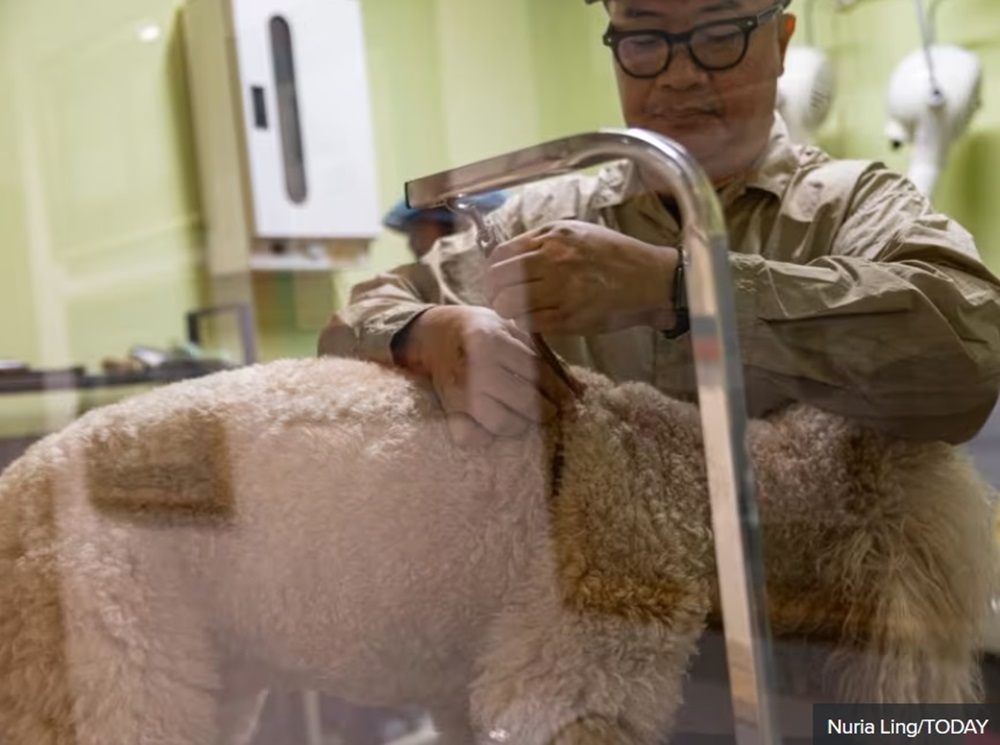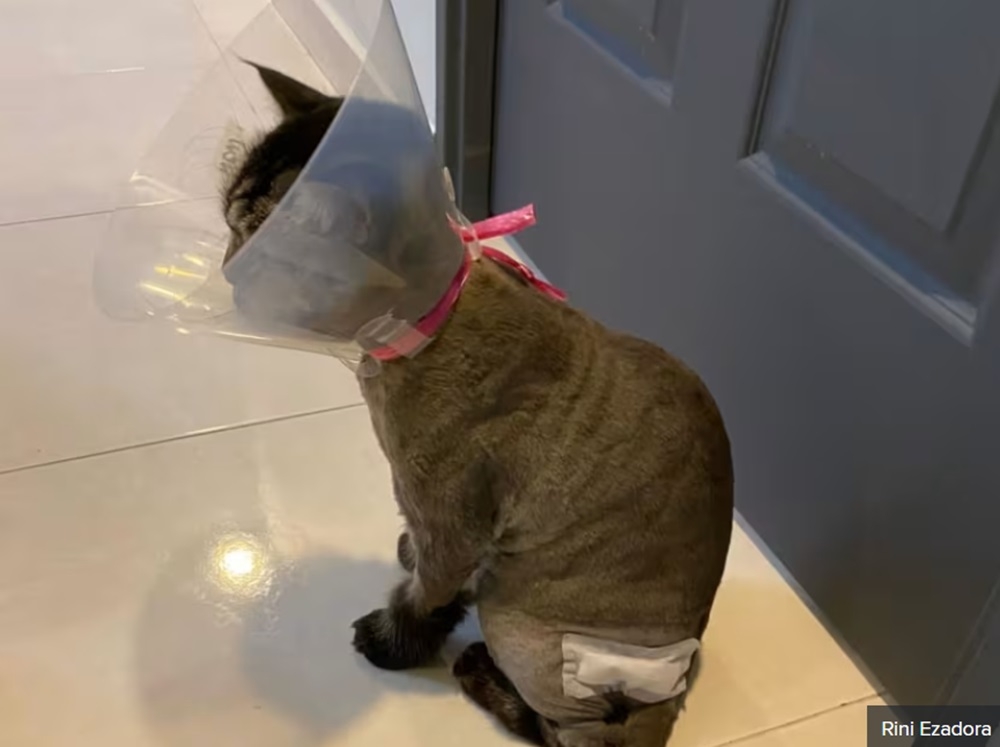- The recent accidents at pet groomers have left some pet owners anxious and outraged
- Pet grooming businesses form an essential part of the animal welfare ecosystem
- However, industry veterans and pet owners alike are concerned over the low-barrier of entry and lack of regulation for these service providers
- Pet owners want higher certifications for those joining the industry and harsher punishments for those who fail to meet set standards
SINGAPORE, Aug 5 — Dino’s first-ever trip to the groomers was unforgettable for all the wrong reasons.
The year-old cat simply needed a trim, but when it left a salon last Friday afternoon (July 26), it got much more than that — a clipped left ear, cut whiskers and abrasions on his left hind leg.
Celest Er, who owns the Siberian munchkin, rushed her pet to a nearby veterinarian where it got 12 stitches for its ear.
Describing what she saw at the salon, the 27-year-old marketing executive said that she noticed “streaks of blood” on her beloved pet.
“The grooming room looked like a murder scene; blood was everywhere,” she claimed.
Er added that the once independent and fearless young feline has become incredibly needy and skittish, refusing to go to sleep without her at night.
When she pressed the groomer for an explanation, he insisted that the injuries were self-sustained, although he eventually agreed to compensate Er the veterinarian’s fees.
“I used to think that the chances of such accidents were really low,” Er said. “But after this, I feel too traumatised to take Dino to a groomer again.”

Another pet owner Rini Ezadora, 40, was unable to make a police report or get any compensation from an errant groomer after her six-year-old cat Moktar was in 2020 allegedly manhandled by a groomer and suffered a broken leg.
The incident, which happened at home, cost her S$5,000 (RM16,694) in veterinarian fees, and she had no way to prove what the groomer did.
Incidents such as these, along with those reported in news media in recent months, have left some pet owners anxious and outraged about the handling of pets by some groomers.
In the most recent case, a four-year-old corgi under the care of grooming salon Pawkins was left unsupervised and fell from a grooming table last Wednesday. It died after dangling from its own leash.
Investigations into this case are ongoing, the National Parks Board (NParks) said.
In May, the owner of an orange Persian cat arrived at a groomer in Chua Chu Kang to find her pet “shivering in pain and fear” with the tip of its ear snipped off.
For the first seven months of this year, though, the Consumers Association of Singapore has received just two complaints related to pet groomers.
Veterinarians told TODAY that although most groomers can carry out their jobs without any incident, the recent serious cases warrant a closer look at the ways in which the industry can be better regulated to better protect the welfare of animals under groomers’ care.
Among the suggestions they have are mandatory closed-circuit televisions (CCTVs) set up at grooming salons, safety certifications for groomers and harsher penalties for errant groomers, including a lifetime ban on owning a grooming salon.
Care needed by groomers and owners
Vets who spoke to TODAY said that grooming-related incidents can happen, including minor cuts, cotton buds stuck in the ear canal, and bleeding from nails cut too short.
However, grooming is essential for pets to maintain hygiene, cleanliness and overall comfort.
Dr Weng Yan Ng, the hospital manager at Beecroft Animal Specialist & Emergency Hospital, said that for instance, animals with thick coats may be more prone to potentially severe conditions such as heat stroke in Singapore’s warm and humid climate.
In another example, without natural friction wear or regular maintenance, a pet’s nails can become ingrown or break and bleed, causing them pain and distress.
Edvarcl Heng, 44, a marketing practitioner for pet brands, once took his pet dog — a golden retriever and labrador mix — to a grooming salon.
After watching how a groomer attended to his dog and having heard enough horror stories, he went out and bought the exact same equipment used and has been grooming his own dog since then.
“It’s good bonding,” he said. “And you’ll never have to worry about your dog getting hurt by someone else.”
Vets said that although some pet owners such as Heng may be able to do basic grooming of their pets at home — giving them a bath, clipping their nails and cleaning their ears — certain breeds do need advanced forms of grooming that require more effort and expertise.
Dr Yeumee Song, lead veterinarian at Pet Space Central Vet Surgery, said that a ragdoll cat or a poodle, for example, would benefit from more regular brushing and possibly shaving of the coat to maintain a healthy coat and skin condition.
Dr Song added that a nervous pet is more likely to bite or scratch if they are not comfortable during the grooming process.
That is why it is important for owners who choose to groom their own pets to have been instructed on the proper method of care and handling of their pet, she said.
In some cases, owners do not have the time or confidence to manage their pets and prefer to approach professionals.
This is the case for marketing professional Tammy Lui, 28, who has a strong preference for taking her dog to groomers where there is a window for owners to observe the process.
“Groomers appear more trustworthy when you can see exactly what they’re doing to the dogs. This keeps them accountable and puts me as an owner more at ease,” she said.
Low entry standards to be a groomer?
As of last year, Singapore’s total pet population of dogs, cats and small animals is estimated to be 847,000, based on a report by Euromonitor International, which provides business and market analysis and consumer insights. This figure is about 26,000 higher than the one reported in 2019.
This rise in pet ownership is part of the reason why there is increased demand for pet grooming services.
There are no official figures on the number of pet grooming shops in Singapore, but three groomers told TODAY that the industry has become more competitive with more such shops opening up across the island in recent years.
Aiding this growth is the industry’s low-barrier to entry, the groomers said.
The shops that sell or board animals must meet licensing requirements to operate, including undergoing mandatory training on pet welfare and animal management.
However, pet grooming businesses do not need to have any such licenses to set up shop.
The Code of Animal Welfare under the Animal and Veterinary Service (AVS) has some minimum standards specified for the pet industry, but failure to comply is not considered an offence.
The code states that all groomers must be, among other things:
- Properly and adequately trained in the area of animal care, animal handling and the grooming requirements of the various breeds and species
- Familiar with different animal breeds and their requirements, as well as the use of grooming equipment or products
More regulation, harsher punishments
Most pet owners, veterinarians and pet grooming businesses alike believe that there are several measures that can be introduced to improve the quality of the industry as a whole.
First, they pointed to the regulation that it is an offence for businesses involved in pet breeding and boarding to operate without a valid licence from AVS. They believe that similar licensing requirements should be applied to pet groomers.
Dr Cathy Chan, a veterinarian with The Animal Doctors, said that overall safety standards will improve when groomers are faced with “a threat of losing their licence if something (bad) happens”.
Vets and pet owners added that it should be mandatory for pet groomers to have certifications from courses that focus not only on the technical aspects of grooming, but also in animal behaviour and managing pet safety.
Marcus Khoo, executive director at Petopia, which is a pet hotel, grooming and spa store, said that it would also be good for pet groomers to clock in “at least two years” of training and practice in the industry before being allowed to groom a pet entirely by themselves.
“Even if someone has a piece of certification, it does not say anything about their experience. You cannot catalyse experience,” he added.
Furthermore, harsher punishments are also necessary to keep bad groomers out of the industry when negligence is established, pet owners said.

In response to TODAY’s queries, NParks said that people working with animals in relevant businesses, including those in the pet grooming sector, are expected to uphold higher standards of animal welfare since they are entrusted with the care of the animals by their clients.
Any person who is found guilty of animal cruelty while operating or under the employment of an animal-related business will face a stiffer penalty of up to two years’ jail or a fine of US$40,000, or both.
In May last year, a dog groomer was fined S$8,000 and disqualified from running any animal-related business for nine months after she took a smoke break and left a dog with a leash around its neck unattended on a table.
Like the corgi last Wednesday, the maltese slipped off the table and died from hanging.
Pet owners who spoke to TODAY said that the punishments in these cases have not been a strong enough deterrence for errant groomers.
Marketing manager Elaine Tan, 36, who has an English bulldog, said: “People are getting away with a slap on the wrist, so they are obviously not afraid (of not meeting safety standards).
“They can simply close down their business and open a new one under a different name.”
Equally troubling to pet owners is the inability to produce evidence proving the groomer’s culpability, owners said.
Er, the owner of the injured one-year-old Dino, said that she had asked to see the salon’s CCTV footage, only to be told that the footage had been “automatically deleted” after 24 hours.
This, she said, hampered her chances of delivering “justice” for her cat.

One dog owner in her 30s, whose pomeranian went through a stark change in behaviour following a grooming session, said that some groomers may not know how to read animals and resort to physical force to get the animal to behave.
She wanted to remain anonymous due to an ongoing dispute with a grooming salon.
She said that if groomers are proven to be culpable for such acts of abuse after investigations, they should face severe consequences.
“They should be barred from practice permanently.” — TODAY






















